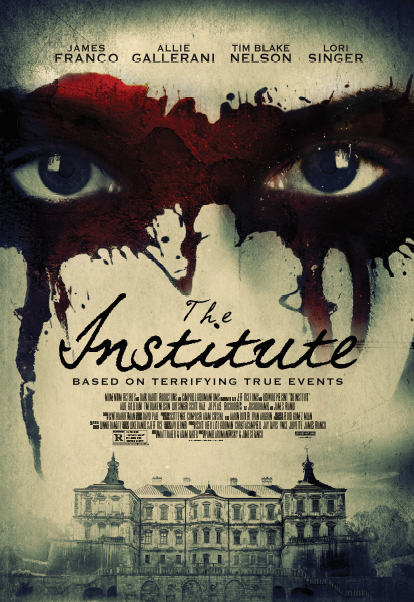New Film ‘The Institute’ Satisfies With a Twist
The bizarre thriller, “The Institute,” directed by James Franco and Pamela Romanowsky, opened on March 3.
March 8, 2017
Innocence and naivete imbue the opening of directors James Franco and Pamela Romanowsky’s thriller “The Institute.” As the plot thickens, these components are progressively peeled back, like layers of an onion.
“The Institute” might be classified as a thriller, but the film is not so much thrilling as just plain strange. Audiences should not expect to find themselves tense and at the edge of their seats, eyes glued to the screen, desperate for a satisfying resolution. Instead, the film proceeds much like its subject matter — an experiment in strangeness, piquing the audience’s curiosity just enough to hold their attention until the climax. The peak itself is not action-packed, but it is very bloody.
As the film opens, brother and sister walk calmly into Rosewood, a mental institute that resembles a spa resort for upper-class ladies to relax and release their tensions and anxieties more than it does an asylum. The sister, Isabel Porter (Allie Gallerni), has come to admit herself for treatment, ready to confront her issues after the sudden passing of their parents — an incident only ever referred to as an accident. Her brother Roderick (Joe Pease) is hesitant but respects her wishes and leaves her at the institute while assuring her he will visit often.
The first patient the siblings interact with rambles about passing tests and questions the nurses about her scores. The encounter leaves the audience pondering whether the woman’s psyche or her treatment at the institute produced her incoherence.
Isabel continues to notice strange going-ons. As her psychiatrist Dr. Cairn (Franco) slowly reveals the institute’s more nefarious intentions by goading Isabel into believing the treatment will liberate her and promote a twisted feminist empowerment, Isabel’s composure begins to fray as well. Her hair goes from being perfectly set to loosely tied and limp. The makeup that made her skin appear flawless disappears, revealing her underlying imperfections. Her luxurious dresses are exchanged for lifeless hospital gowns.
Eager to please Dr. Cairn, Isabel falls further into a brainwashed state. When Rodrick visits, he realizes something is off with his sister and begins to investigate outside the walls of Rosewood since his sister refuses to leave at his pleading. The brainwashing soon becomes violent — she receives brutal treatment and her behavior becomes volatile. Rodrick eventually unveils the troubling nature and motivations of the society that operates the institute. The film’s resolution culminates in implications of distrust in institutions and explores how society conceives mental illnesses.
The audience will spend most of the movie wondering at the far-fetched strangeness with clinical disengagement more than invested desire, as they watch just to see how far into craziness the filmmakers will steer their project. The twist ending is the best part of the hour-and-a-half spent watching the film.
“The Institute” was released in theaters on Friday, March 3.
Email Anubhuti Kumar at [email protected].










































































































































